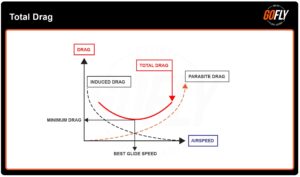Month: June 2022
-
Why adopting the best glide speed is so important after an engine failure
If you have already completed Practice Forced Landing (simulated engine failure) training you will remember how your flight instructor reiterated how important it is to adopt the best glide speed as soon as the engine goes quiet. So why is the best glide speed so important after an engine failure?
Glide performance and best glide speed
Firstly, for your aircraft type, the pilot operating handbook (POH) will advise what the best glide speed is for the aircraft type. The best glide speed is the airspeed for the best lift to drag ratio. Any faster than this speed and the total drag increases, and any slower than this speed, then the total drag increases.
A simpler definition is ‘at the best glide speed the aircraft is delivering the maximum amount of lift for the least amount of drag’. This best glide speed is important to know in the event of an engine failure, as it will result in obtaining the best maximum gliding range for the aircraft.
As we can see from the graph below at the best glide speed total drag (Induced plus parasite drag) is at a minimum.

Factors affecting glide range
The maximum gliding range for the aircraft type will also be affected by wind, weight and aircraft configuration. If you are flying into a strong headwind, your gliding rage will be reduced; and if you are flying with a tailwind, your gliding rage will be extended.
As for weight, the heavier the aircraft, the more lift is required to balance the force of weight. The extra weight means that for the same airspeed, more angle of attack is required to create more lift, which results in more drag and therefore diminishes the aircraft’s glide range.
Aircraft configuration also affects the aircraft glide range. For instance, if you have flaps selected, this will increase both induced drag and parasite drag. If the total drag increases, then the aircraft’s glide range will be reduced.
Time and distance is critical following an engine failure
Unless the aircraft is on fire, the pilot should aim to stay in the air as long as possible and have the longest possible glide range following an engine failure. This will allow the pilot to have more options in relation to field selection, and allow more time to complete the emergency procedures. By not adopting the best glide speed the pilot may not be able to make the pre-selected field to land in.
This short article is an extract from our BAK Easy Book, from the GoFly Online flight training platform. The GoFly Online Team wants to help you become the best pilot you can be. Feel free to try our 7–day FREE trial to access all videos, practice exams and theory books, at www.gofly.online
7 Day
FREE
Trial
Get access to the complete catalogue of your chosen subscription level for 7 days. After your free trial, your paid subscription automatically commences. Cancel anytime.
Get FREE TrialOur
Partners


